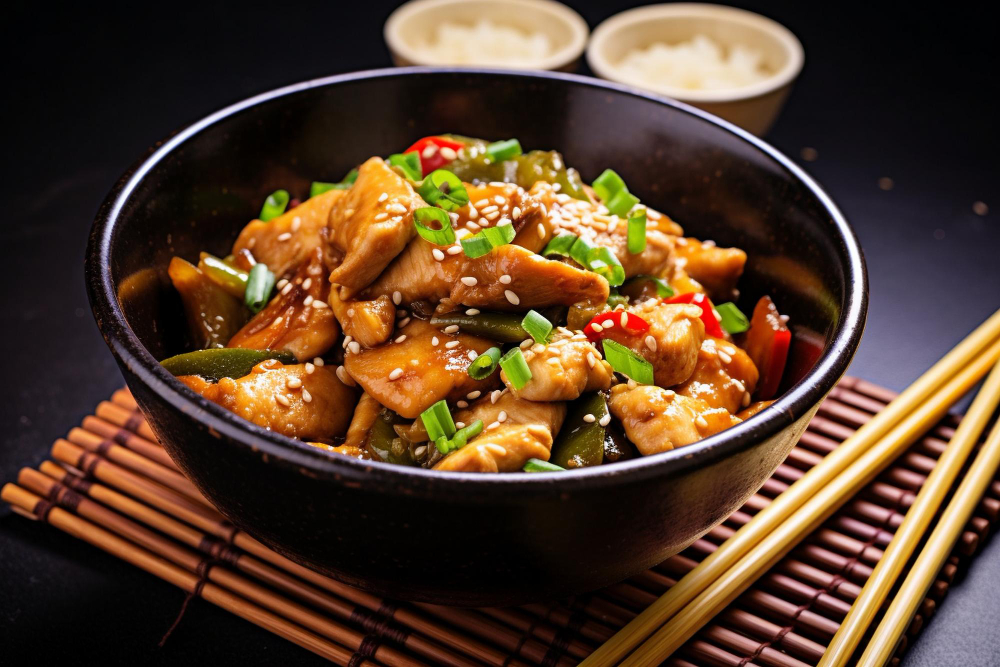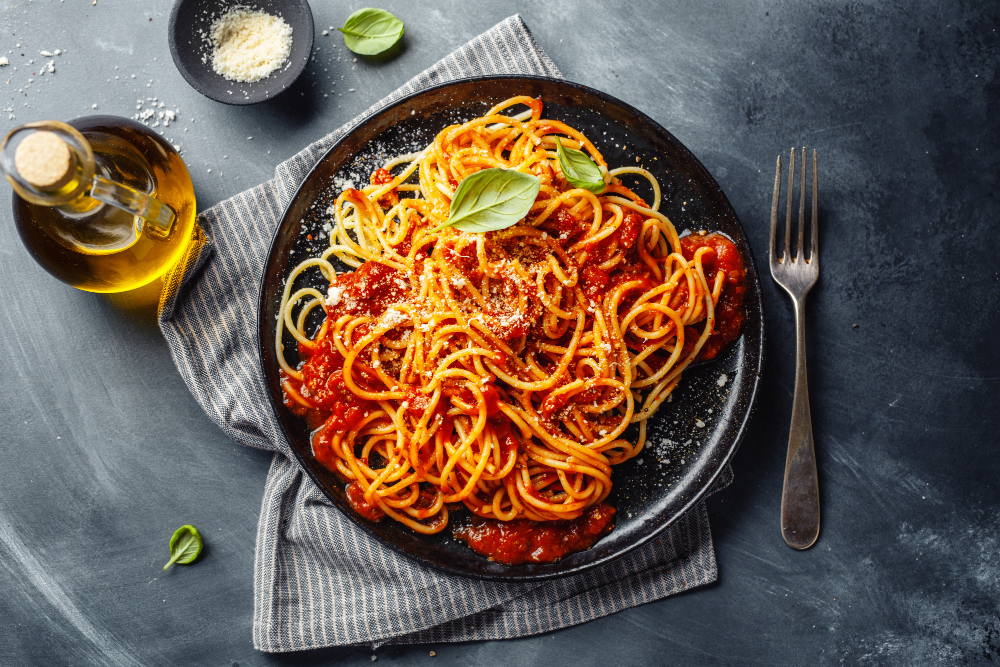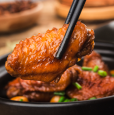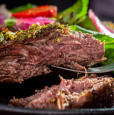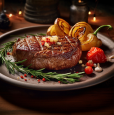If you’re a foodie, you’ve probably wondered about the differences between Chinese and Japanese cuisine. While both are delicious and have unique flavors, they have distinct differences that make them stand out.
Chinese cuisine boasts bold, diverse flavors and techniques, while Japanese cuisine emphasizes simplicity and freshness with subtle umami flavors. Though both share some ingredients, their distinct approaches create unique culinary experiences.
In this blog post, we’ll explore the differences between Chinese and Japanese food, including their ingredients, cooking techniques, and presentation.
Chinese vs. Japanese Cuisine: A Brief Timeline
| Terms of Comparison | Japanese Food | Chinese Food |
| Definition | Reflects Japanese taste and style | Reflects Chinese cooking traditions |
| Oil | Less oily | Uses large amounts of oil |
| Spices | Less spicy | Tends to be spicier |
| Ingredients | More Seafood | Rice and meat are prominent |
| Cooking Style | Often raw | Typically fried evenly |
| Cooking Pan | Flat grill pan | Wok for frying |
| Tea Option | Green tea preferred | Black tea preferred |
| Healthy Option | Relatively healthier due to less oil and spice. | Tends to be less healthy due to more oil and spice. |
| Examples | Sushi, Ramen, Tofu, etc. | Fried rice, noodles, wonton, etc |
Chinese vs. Japanese Food: A Tale of Two Culinary Traditions
First things first, let’s clear the chopsticks – Chinese and Japanese cuisine are distinct entities, each boasting its own unique characteristics. While both are celebrated for their rich history and exquisite flavors, they march to the beat of different drums.
Rich with Ingredients Profiles
The ingredients used in Chinese and Japanese cuisine are vastly different. Chinese cuisine uses a lot of soy sauce, ginger, and garlic, while Japanese cuisine uses soy sauce sparingly and emphasizes the ingredients’ natural flavors.
Chinese cuisine uses a lot of pork, beef, and chicken, while Japanese cuisine primarily uses fish and seafood. Japanese cuisine also uses a lot of rice, while Chinese cuisine uses rice and noodles.
Flavors That Dance on Your Palate
Chinese cuisine is renowned for its bold and diverse flavors, encompassing everything from sweet and sour to spicy and savory. Think of the fiery delights of Sichuan cuisine or the delicate balance of Cantonese dim sum.
On the other hand, Japanese cuisine tends to celebrate simplicity, focusing on fresh, seasonal ingredients and subtle umami flavors. From the umami-packed sushi to the comforting warmth of miso soup, Japanese dishes often emphasize purity and refinement.
Techniques That Shape the Taste
Behind every mouthwatering dish lies a symphony of culinary techniques. Chinese cuisine dazzles with its mastery of stir-frying, braising, and deep-frying, creating dishes that are vibrant in color and bursting with texture.
Meanwhile, Japanese chefs wield their knives precisely, honing the art of sushi-making, tempura frying, and delicate sashimi slicing. It’s all about precision and finesse in Japanese culinary craftsmanship.
Cultural Influences on the Plate
Food is more than sustenance – it reflects culture, history, and tradition. Asian cuisine draws inspiration from a tapestry of regional flavors, shaped by centuries of culinary exchange along the Silk Road.
Each province boasts its own culinary identity, from the spicy delights of Sichuan to the hearty noodles of the north.
In contrast, Japanese cuisine pays homage to the country’s deep-rooted reverence for nature and seasonality. For instance, the art of Kaiseki cuisine showcases the beauty of each season through meticulously crafted dishes.
Variance in Meal Presentation
The presentation of Chinese and Japanese food is also different. Chinese cuisine is often served in large portions, while Japanese cuisine is served in smaller portions, emphasizing aesthetics.
Japanese cuisine is known for its minimalist presentation, with each dish in its small bowl or plate. On the other hand, Chinese cuisine is often served in larger plates or bowls, with several dishes served at once.
Japanese vs. Chinese Cuisine: Exploring Popular Dishes
Have a glance at the well-known Japanese and Chinese foods:
Famous Japanese Meals
- Sushi: A quintessential Japanese dish consisting of vinegared rice and various ingredients like raw fish, seafood, vegetables, and sometimes tropical fruits, all rolled or pressed into bite-sized pieces.
- Ramen: A hearty noodle soup featuring wheat noodles served in a flavorful broth, often flavored with soy sauce, miso, or pork bone broth, and topped with ingredients like sliced pork, soft-boiled eggs, and green onions.
- Tempura: Lightly battered and deep-fried seafood, vegetables, or other ingredients, resulting in a crispy and delicate dish often served with a dipping sauce.
- Tonkatsu: Breaded and deep-fried pork cutlet, typically served with shredded cabbage, rice, and a tangy tonkatsu sauce.
- Yakitori: Skewered and grilled chicken pieces seasoned with salt or brushed with a sweet and savory soy-based sauce, commonly served as a snack or appetizer.
Popular Chinese Meals
- Fried Rice: A classic Chinese dish made with cooked rice stir-fried with various ingredients such as eggs, vegetables, and often meat or seafood, seasoned with soy sauce and other spices.
- Kung Pao Chicken: A spicy stir-fry dish featuring diced chicken cooked with peanuts, vegetables, and chili peppers, flavored with a tangy sauce from soy sauce, vinegar, and sugar.
- Dim Sum: A selection of small, bite-sized dishes served in bamboo steamers or on small plates, including dumplings, buns, rolls, and other savory or sweet snacks, often enjoyed with tea.
- Peking Duck: A famous Chinese dish with tender, roasted duck with crispy skin, served with thin pancakes, scallions, cucumber, and hoisin sauce for assembling into wraps.
- Mapo Tofu: A flavorful Sichuan dish featuring tofu cubes and minced meat cooked in a spicy chili bean paste-based sauce, seasoned with Sichuan peppercorns for a numbing sensation.
So, Are Chinese and Japanese Foods the Same?
In a word: nope! While they may share certain ingredients and cooking methods, Chinese and Japanese cuisine are as distinct as the Great Wall and Mount Fuji.
Each offers its own tantalizing array of flavors, textures, and cultural influences, inviting diners on a sensory journey like no other.
Closing Thoughts and Your Culinary Adventure Awaits
Whether you’re craving the fiery heat of Sichuan peppers or the delicate elegance of sushi rolls, a world of culinary wonders is waiting to be explored. So why not embark on your epicurean adventure and sample the best of both worlds?
Experience customized meals at Atlanta; we’re passionate about bringing the finest flavors from around the globe to your plate. Join us on a journey of gastronomic discovery, where every bite tells a story, and every meal is an adventure. Come savor the difference with us!
Ready to tantalize your taste buds? Book your chef today, and let the culinary magic begin!
Explore More:
- How a Personal Chef Can Simplify Your Life?
- How a Personal Chef Can Support Your Weight Loss Journey
- Delicious and Healthy Chicken Recipes for You





